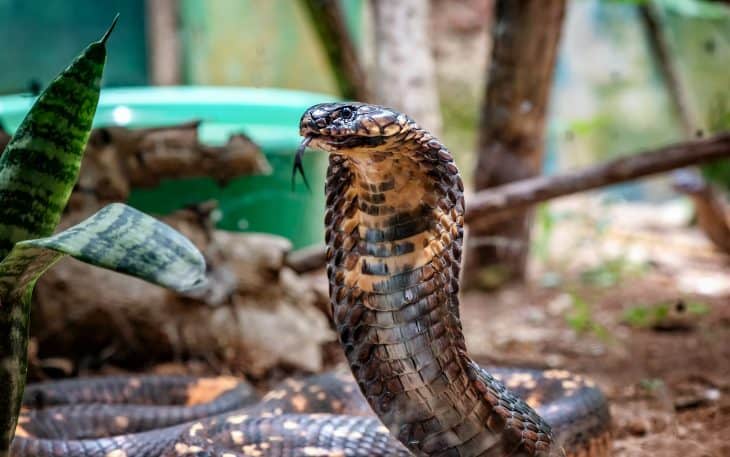
Brace yourself with this list of king cobra facts before you plan your next trip to the lakes and streams of India and other Southeast Asian countries. Contrary to what most people say, there are ways to prevent or save yourself from suffering from a venomous king cobra bite. With this, you won’t have to cancel a much-deserved vacation in Asia.
Despite our words of encouragement, we still don’t advise you to look for king cobra snakes during your trek around Asia. Seeing one of the most venomous snakes raise itself with its hood extended is not a pretty sight. However, their fierce reputation doesn’t match their introverted nature. They hate interacting with humans or other animals because they prefer to just hunt for prey as needed.
Now that we got your attention, check out these other king cobra facts we prepared just for you! Learn what makes these serpents so fascinating by checking out our list right now!
- The king cobra is the largest venomous snake in the world.
- These deadly snakes flatten their bodies to swim.
- You can locate a king cobra habitat if you travel to lakes or streams near dense highland forests around Southeast Asian countries or at the mountain range of Western Ghats, India.
- The low-pitched hisses from king cobras end up sounding like a growling noise.
- We call a group of king cobras a “quiver.”
- The scientific name of the king cobra is Ophiophagus hannah.
- They are a member of the venomous snake family Elapidae.
- The king cobra breeding season happens around January to April every year.
- Their average life span lasts for about 30 years.
- A bite filled with king cobra venom weighs over 420 mg.
- The king cobra’s fangs measure about 10 millimeters long.
- The king cobra snake can grow more than 18 feet long but its average length around is 3.18 to 4 meters (10.4 to 13.1 ft).
- When hunting for prey, king cobras use their sensitivity to vibrations to locate their next meal.
- King cobras use their forked tongues to smell and track their prey.
- Aside from the Indian Cobra, the king cobra was one of the most commonly chosen serpents by snake charmers.
- The king cobra’s scales come in different colors depending on their location.
- There are multiple cases of king cobras escaping from locked cages in zoos.
- King cobras remembering the faces of humans is a myth.
- India named the king cobra snake as their national reptile.
- King cobra practices diurnality or activeness during the day.
A bite with the king cobra venom can kill 1 elephant or around 20 humans.
One of the most well-known king cobra facts on our list focuses on the effects of the serpent’s deadly venom. The snake eater’s bite carries about 200 to 420 mg of venom composed of neurotoxins that directly attack the victim’s central nervous system. Because of this, those who got bitten suffer from severe pain and vertigo that lead to paralysis and coma. An untreated king cobra venom bite can lead to respiratory or kidney failure and eventual death within 30 minutes. To avoid this, you must learn the safety protocol for king cobra snake bites before you plan a trip near the serpent’s habitat.
King cobra snakes never stop growing.
After leaving their nests, king cobra snakes grow in certain lengths throughout their whole lives. Experts claim the venomous snakes can reach up to 18 feet long with an average length between 10 to 13 feet. Because of this, they’re dubbed as the longest venomous snakes in existence.
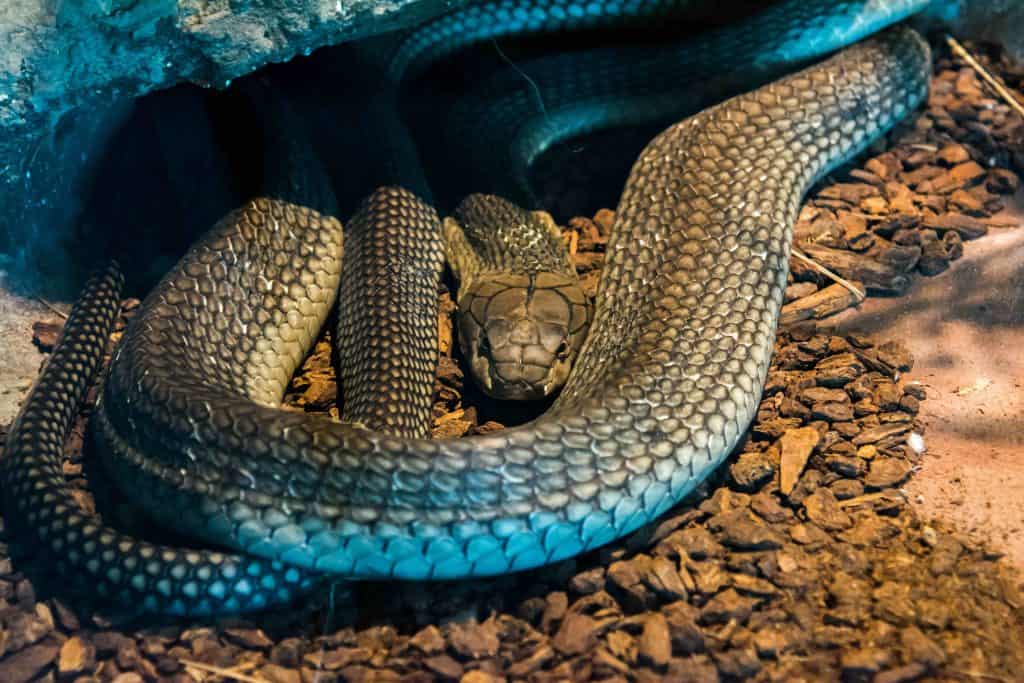
Due to its long length, the king cobra snake needs to shed its skin five times a year.
Talking about a snake shedding its skin is a must in our king cobra facts list. Upon reaching adulthood, the venomous snake starts to shed its skin up to five times a year or more. Since they don’t stop growing in length, shedding their skin is necessary because their body needs to adjust to the prey they swallow.
King cobra snakes can swim and climb faster than humans.
If you don’t find king cobras slithering on land, they might be climbing trees or taking a dip in the water. They can climb up to 65 ft to either hunt or observe their prey. To swim, king cobras need to flatten their bodies. They may not be semi-aquatic snakes but they’re decent swimmers that sometimes move faster than humans or boats.
As known predators, these fierce snakes claim the title "king" because they're also snake eaters.
One of the most terrifying king cobra facts centers on the serpent’s carnivorous diet. They can hunt for easier prey but no, they like the challenge of going against fellow snakes. If they don’t find any formidable foes, king cobra snakes prey on lizards or other game near their habitats. They usually eat the heads of their prey first before swallowing the rest of its body.
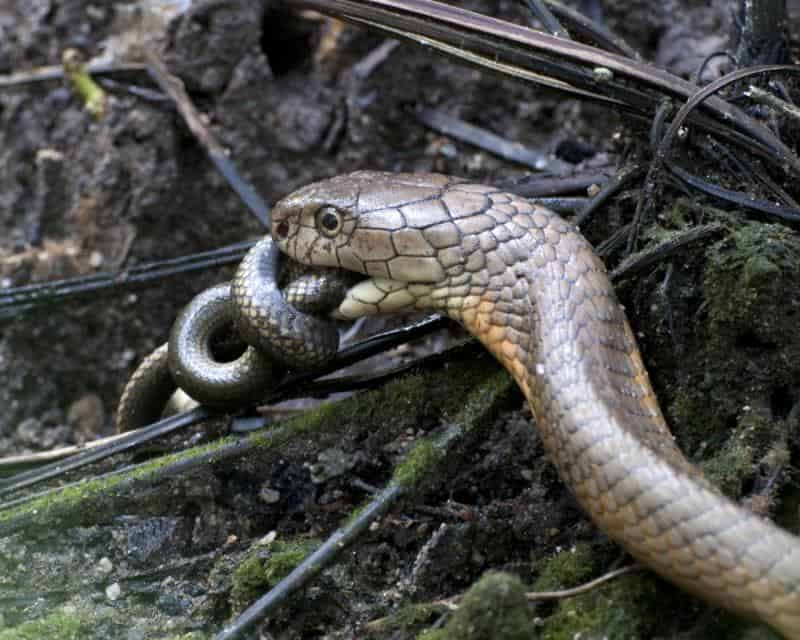
King cobras love eating rat snakes.
The king cobra’s carnivorous diet mainly consists of other serpents that they can easily overpower. Because of this, one of their favorite prey is the rat snake. However, they sometimes hunt for younger king cobra snakes just because they can.
As the sole member of the genus Ophiophagus, there are no other king cobra species.
An important bit on our king cobra facts list revolves around their genus. They’re so unique from other cobras that they earned their own genus. Thus far, king cobras remain as the sole member of the Ophiophagus. There are other cobras but none like the king.
They don't spit venom.
As mentioned, the king cobra differs from the cobra species especially since they have their own genus. One that makes them stand out is the fact that they do not spit or spray venom. Instead, king cobras pack a lethal dose of venom and inject it to their victims with their stealthy bites.
King cobras are equipped with an exceptional nervous system.
We won’t get too scientific with this king cobra facts entry, but, it’s still important to point out. Various snakes showcase their excellent senses when they hunt for prey. However, king cobra snakes and their exceptional nervous system can easily best those of other serpents. The longest venomous snakes have brains equipped with an excellent memory and heightened sensitivity that helps them recognize scents and find their prey from afar. Additionally, eating fellow venomous snakes does not kill or affect them because they’re aware of their body’s limits.
There are myths and folklore about king cobra snakes from various countries like India, Myanmar, and Sri Lanka.
Throughout history, ancient civilizations spread various accounts of myths about snakes or serpents. Because of their habitat, mythology about king cobras mostly originates from Asian countries like India, Myanmar, and Sri Lanka. Some countries even consider them as feared deities that they pray to.
One of the most famous king cobra myths came from India. According to the folklore, the venomous snake’s exceptional sight and memory help them remember the faces of king cobra killers. They then hunt down the cruel humans as revenge for their fellow serpents.
There aren't a lot of king cobra antivenom manufacturers.
This entry for our king cobra facts list applies to almost all antivenom available in the world. Amidst the fatality rate of king cobra venom, treatment centers lack the means of attaining enough antivenom. Thus far, there are only two types of king cobra antivenom. Unfortunately, they’re not widely available to victims. One comes from The Red Cross in Thailand while the other is manufactured in India by the Central Research Institute. These locations are only useful to king cobra victims in Asia.
King cobra snakes and other cobras can't hear the music of a snake charmer's flute.
Since 1991, snake charming has been banned in India and several other countries. When it was still being practiced, many people believed that king cobras and other snakes got hypnotized by the sound from the snake charmer’s flute. In reality, they’re mesmerized by the movement and shape of the instrument.
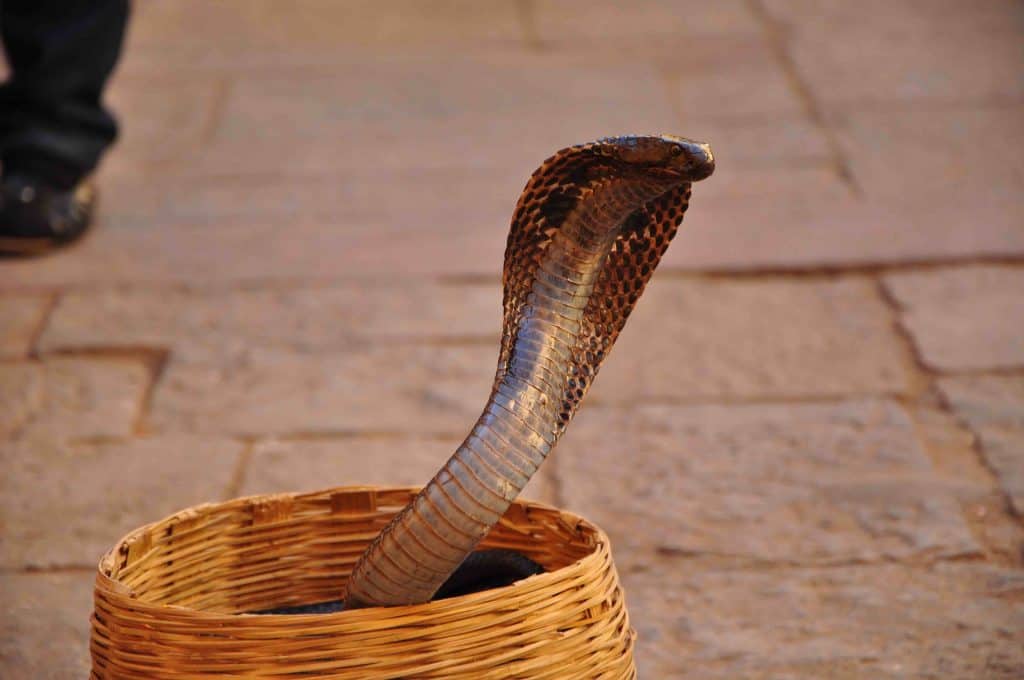
You can distinguish a king cobra from other snakes by looking at the distinct pattern of scales on the back of their head.
One of the most surprising entries in our king cobra facts list discusses the snake’s unique appearance. You can easily tell them apart from other cobras by looking closely at the back of their heads. The pattern of scales seen on their heads is exclusively theirs.
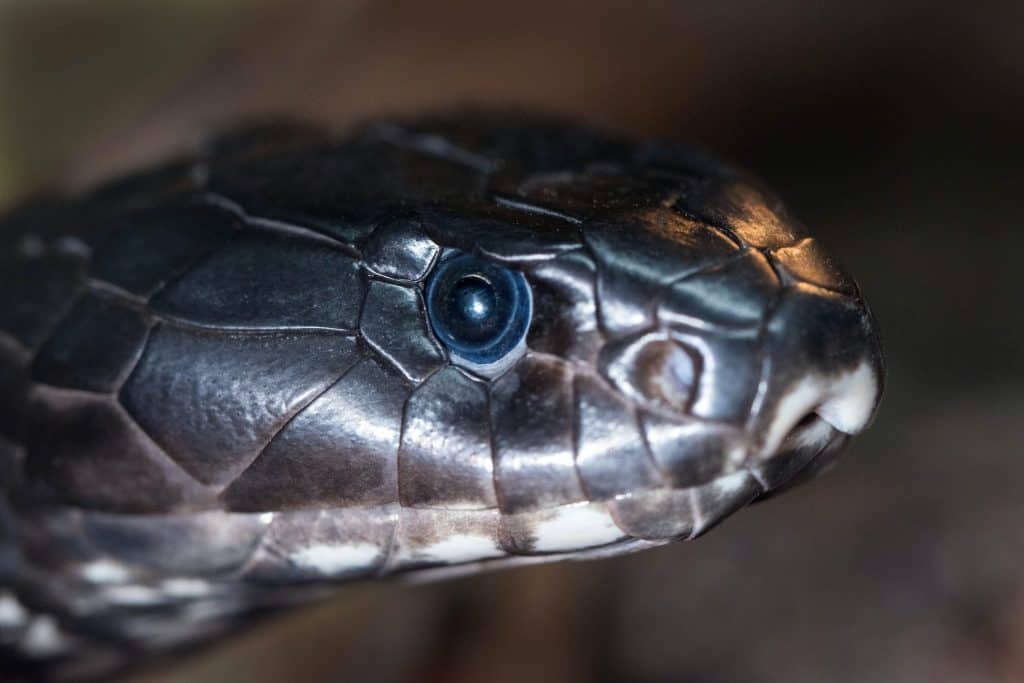
They're considered the smartest snakes in the world.
After observing the venomous snakes, experts dubbed the king cobra as the smartest out of all snakes in existence. They especially showcase their intelligence with their exceptional hunting methods. These venomous snakes tend to observe their prey’s routine before waiting for the perfect moment to strike. They also display different hunting strategies for almost every animal they consume.
The current king cobra conservation status is under "vulnerable" in the IUCN Red List.
The conservation status of the venomous snake is probably the saddest entry on our king cobra facts list. The International Union for Conservation of Nature (IUCN) Red List categorized the king cobra under their tally of “vulnerable” animals. The decline of their population stems from the continuous effects of deforestation. Additionally, the unique traits of the king cobra make them one of the most in-demand animals of both legal and illegal international pet trade.
To protect king cobra eggs, the females build intricate nests for their young.
They may eat fellow king cobras but, that’s not the case if they’re the parents. Mother king cobras build intricate nests made with different kinds of vegetation and branches to protect her eggs. She then guards them until they hatch. Some male king cobras also help out in protecting the nest while the mother is out hunting for prey.
Beware of baby king cobras.
After hatching, baby king cobras are as cute as most snake hatchlings due to their non-threatening size. Don’t let their tiny bodies deceive you, though. They may be small but they can already produce enough venom like that of an adult king cobra.
The venomous snakes are introverts and hate interacting with other animals unless it’s king cobra breeding season.
Despite their overall fierceness in the wild, king cobras do their best to avoid humans and other animals. These venomous snakes don’t just use their heightened sensitivity and exceptional eyesight to hunt for prey. They also use their skills to avoid contact with humans and their natural enemies in the wild.
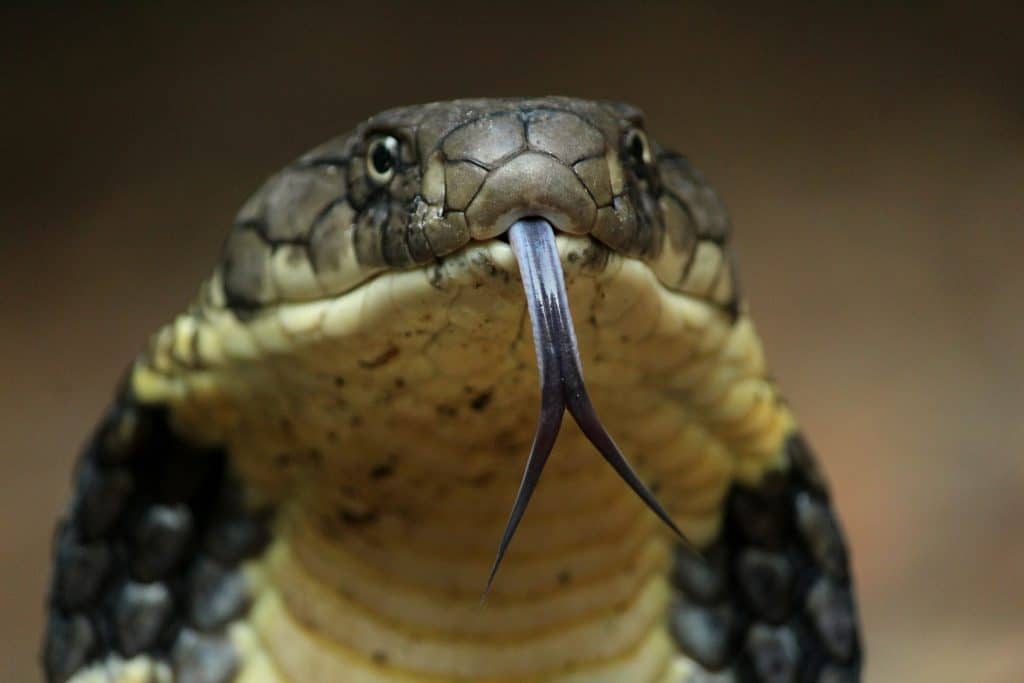
King cobras only intimidate or assert their dominance if continuously provoked.
Due to their introverted lifestyle, king cobras would slither away at the presence of a human. Unfortunately, that doesn’t stop some poachers or daredevils, who hope to capture or take down the venomous snake, from making dumb decisions. If you don’t stop provoking them, king cobras will raise themselves, extend their hoods, and hiss loudly as a threat before they strike.
A king cobra's natural enemy is a mongoose.
Like most venomous snakes, the natural enemies of king cobras are the mongoose. Don’t let the size of these mammals deceive you. The mongoose is a small carnivore who especially preys on snakes. The bites of king cobras and other deadly snakes don’t affect them because of their immunity to all snake venoms.
The Harm We Instill To King Cobras
As we conclude this list of king cobra facts, we hope you realize the dangers surrounding the magnificent snake. We are actually more dangerous to king cobras than they are to us. Despite their high fatality rate, king cobras only attack humans to survive. If you’re fascinated with these venomous snakes, you should just watch documentaries or visit centers that specialize in rescuing them. Don’t give in to tempting offers from the international pet trade and just let king cobras reign peacefully in their natural habitats.
Was this page helpful?
Our commitment to delivering trustworthy and engaging content is at the heart of what we do. Each fact on our site is contributed by real users like you, bringing a wealth of diverse insights and information. To ensure the highest standards of accuracy and reliability, our dedicated editors meticulously review each submission. This process guarantees that the facts we share are not only fascinating but also credible. Trust in our commitment to quality and authenticity as you explore and learn with us.
